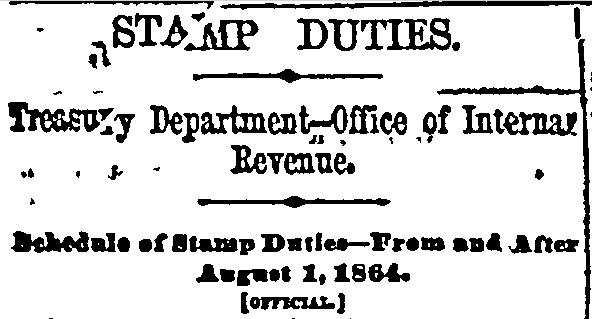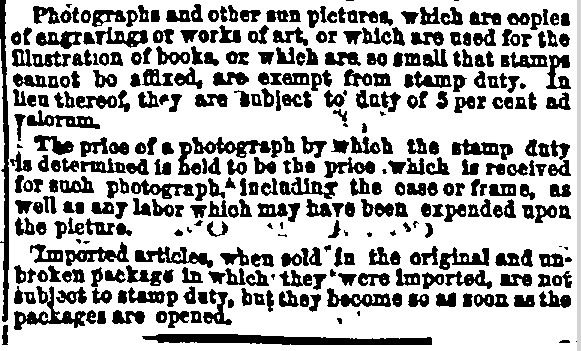Introduction: In this article, Mary Harrell-Sesniak shows how to determine the date of undated, Civil War-era family photographs using revenue stamps affixed to the back of the picture. Mary is a genealogist, author and editor with a strong technology background.
Do you have Civil War-era photographs of your ancestors that are undated? As this genealogy article explains, tax stamp legislation passed by the Union in 1864 might provide a valuable clue to help you finally assign a date to those old family photos, allowing for deeper Civil War family history research.

In order to fund the rising costs of the Civil War, the federal government passed an act on 30 June 1864 requiring that tax stamps be affixed to various goods, including:
- Proprietary Medicines and Preparations
- Perfumery and Cosmetics
- Friction Matches
- Cigar Lights and Wax Tapers
- Photographs, Ambrotypes and Daguerreotypes
- Playing Cards
Although this legislation achieved the intended goal of raising revenue, it was an extremely unpopular tax—especially for those desiring photographs of family members soon to be separated by war.

Fees were assessed upon the selling price of photographs, ambrotypes and daguerreotypes, with different-colored stamps for the various fees.
- 2¢ stamps were blue or orange and assessed on images 25 cents or less
- 3¢ stamps were green and assessed on images between 26 and 50 cents
- 5¢ stamps were red and assessed on images 51 cents to one dollar
- For images exceeding one dollar, in addition to the 5¢ stamp an extra 5 cents was assessed “for every additional dollar or fractional part thereof”
As with most laws, there were exceptions and specifications that had to be followed.

“Photographs and other sun pictures, which are copies of engravings or works of art, or which are used for the illustration of books, or which are so small that stamps cannot be affixed, are exempt from stamp duty. In lieu thereof, they are subject to duty of 5 per cent ad valorem.
“The price of a photograph by which the stamp duty is determined is held to be the price which is received for such photograph, including the case or frame, as well as any labor which may have been expended upon the picture.
“Imported articles, when sold in the original and unbroken package in which they were imported, are not subject to stamp duty, but they become so as soon as the packages are opened.”
The process was for a photographer to affix a stamp to the back of an image, and cancel it by adding initials and a date.
In the old photograph example above of a Carte de Visite (CDV), which shows the back and front of the image side-by-side, the picture was taken at Delong’s Gallery on Locust street in Fairbury, Illinois. The 5 cent stamp indicates that the photographer charged from 51 cents to $1 for his services.
Photographers often designed their own system of stamp cancellation. The hand-written date appears to be 11/11, but more likely was 11/4 (Nov. 1864), with the information under the numbers indicating either his initials or an internal reference. It was not 1861, as revenue stamps are only found on images 1864-1866, with the final repeal of the Stamp Act on Aug. 1, 1866.